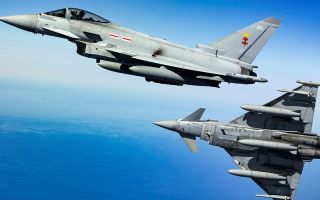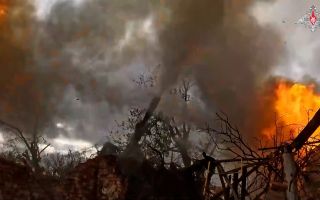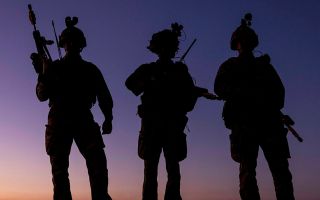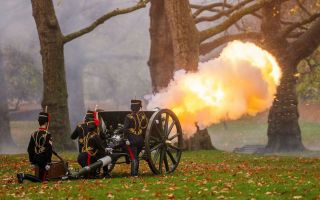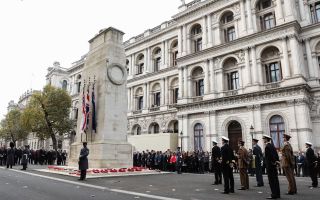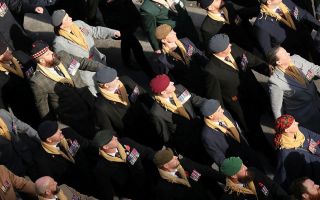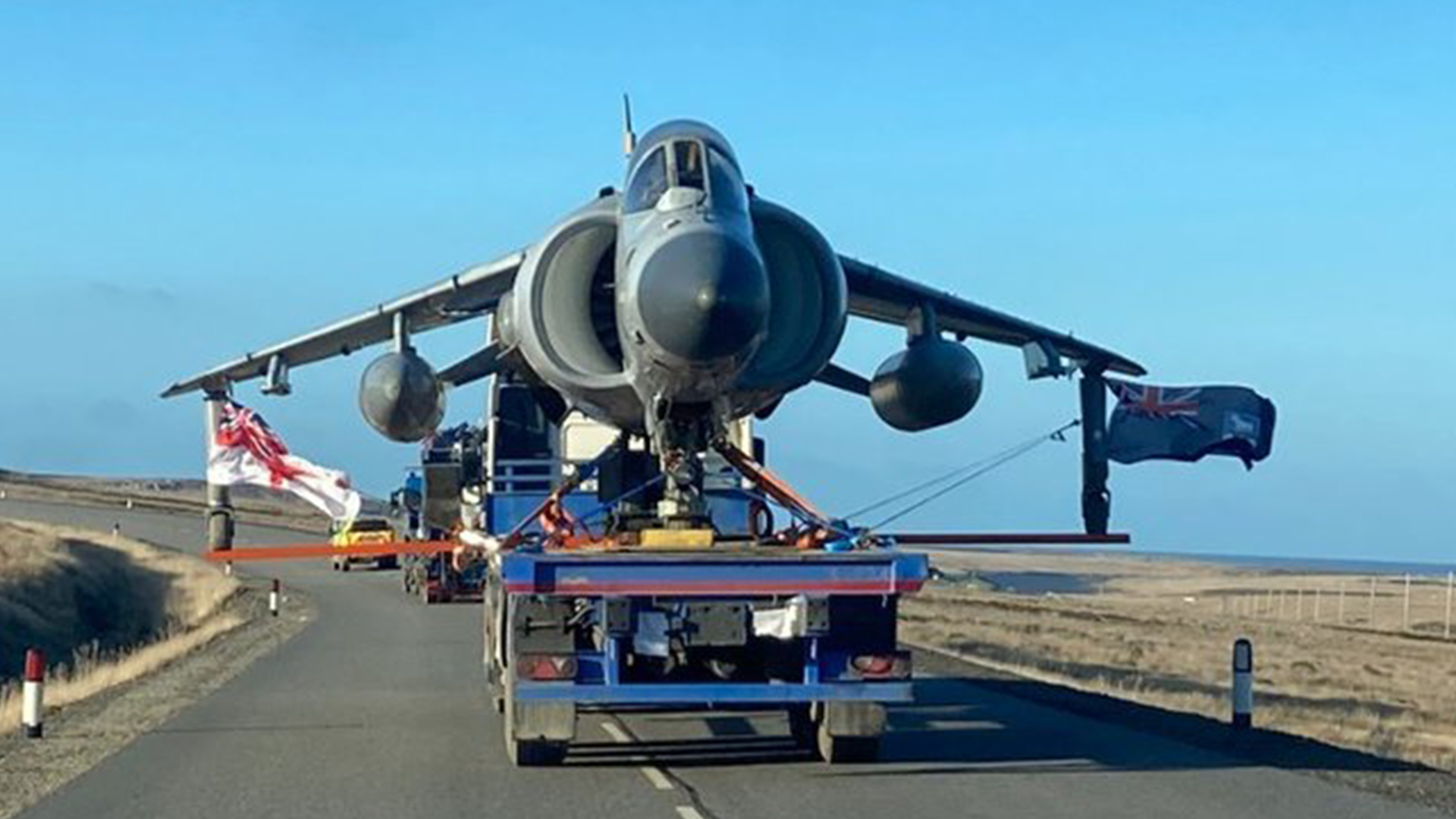
Permanent home in the Falklands for Sea Harrier and Lynx that crippled Argentine sub

A Royal Navy Sea Harrier and a Lynx helicopter – a combat veteran of the Falklands War – have completed their 8,000-mile journey to the Falkland Islands.
Sea Harrier ZH801 and Lynx XZ725 were taken by road on the final leg of their trip to Stanley where they will be the main exhibits in the city's museum.
The two naval aircraft were put on display to the public for two days when they reached their final destination, a plot of land allocated for the Lookout Gallery and Exhibition Hall in the capital.
The aircraft were then "wrapped up" by members of the Joint Aircraft Recovery and Transportation Squadron (JARTS).
Because it is now mid-winter in the Southern Hemisphere, the JARTS team had to preserve them from the elements until the new exhibition hall is completed next spring.
The aircraft and the new exhibition hall, which will allow the museum to better tell the story of the 1982 conflict, are expected to help attract up to 100,000 visitors every year thanks to the growing cruise ship industry.
This is double the current number of visitors to the Falkland Islands – and more than 30 times the number of people who live there.
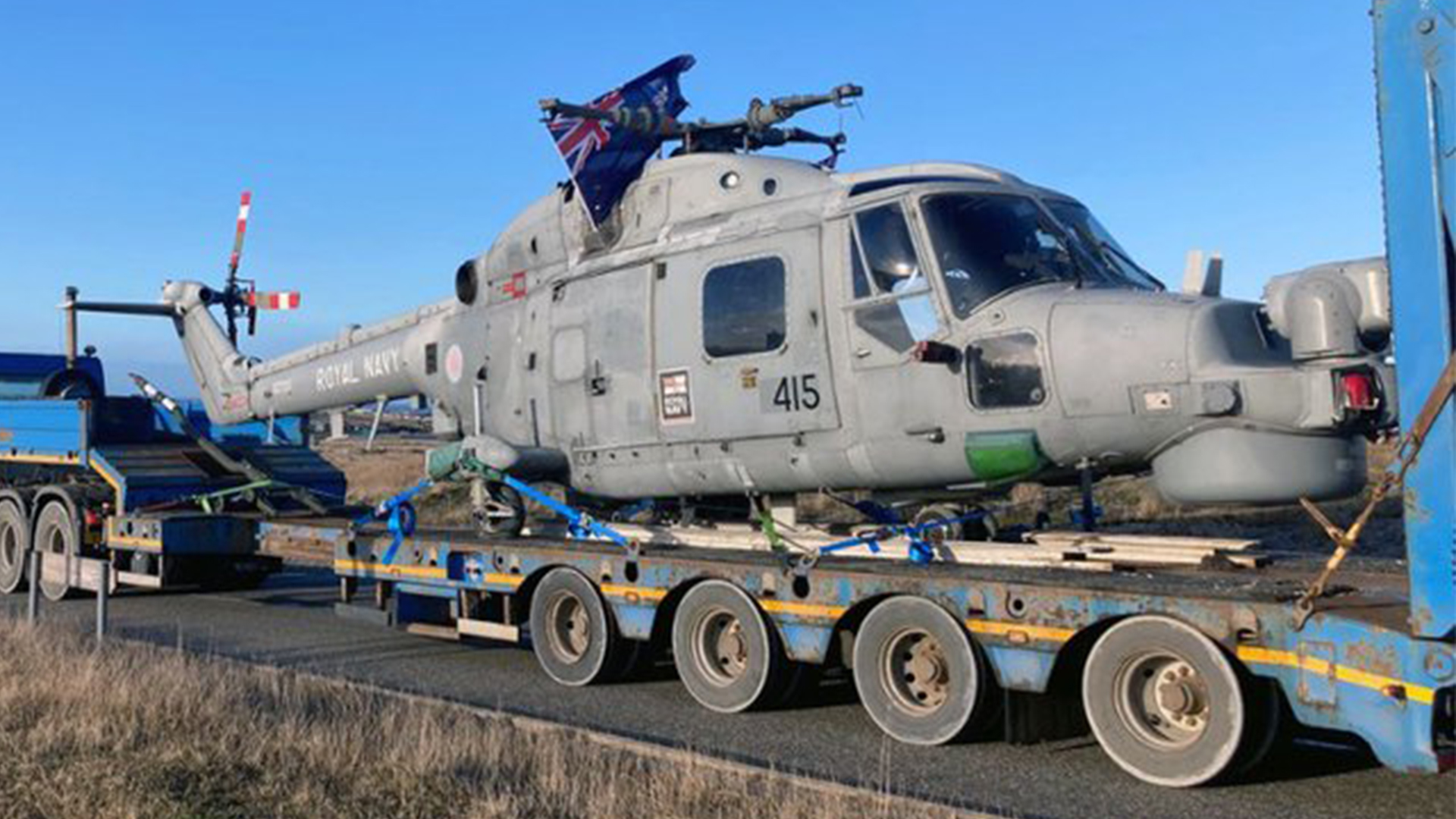
Only the Lynx saw service in the 1982 campaign.
Sea Harrier ZH801 was delivered to the Fleet Air Arm after the war and served until 2004.
She then acted as a hangar guardian on display at RAF Cottesmore and then RNAS Yeovilton.
Westland Lynx XZ725 on the other hand, is a true veteran of the war.
Operating from the frigate HMS Brilliant, she attacked and crippled the Argentine submarine Santa Fe in South Georgia during the opening moves of Operation Corporate.
In order to better tell the stories of both machines – and the wider role of the Fleet Air Arm in the Falklands – two other veterans are helping out.
Commander Tim Gedge, who was in charge of the Harriers of 809 Naval Air Squadron, and Nick Butler, the observer on the Lynx in 1982, have provided the museum with detailed accounts.


